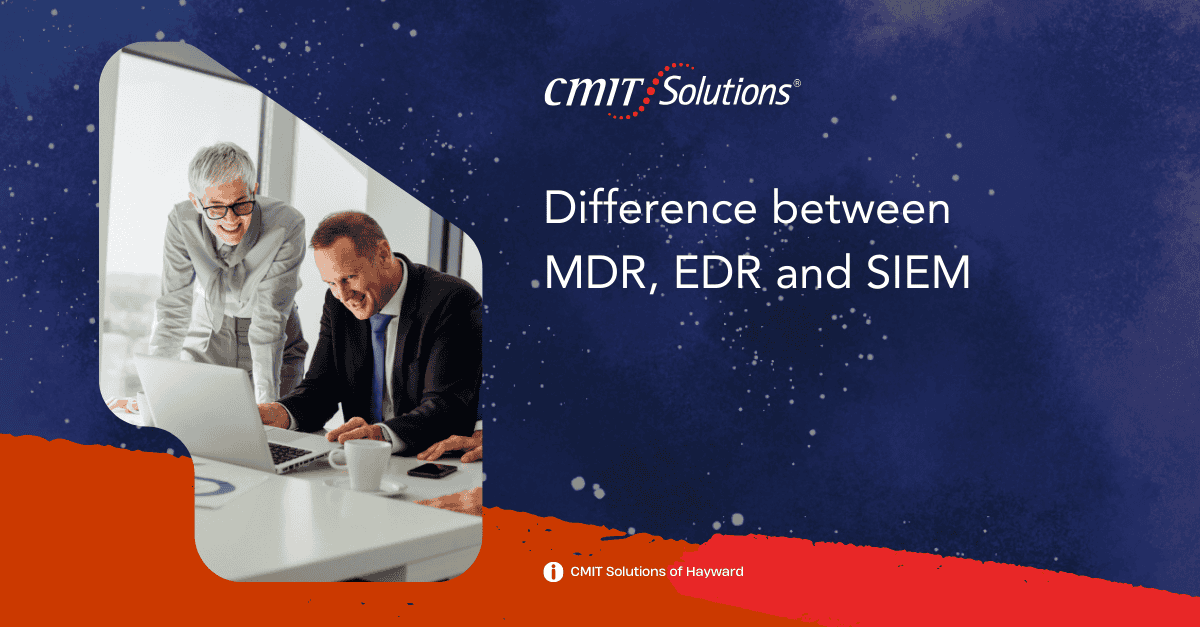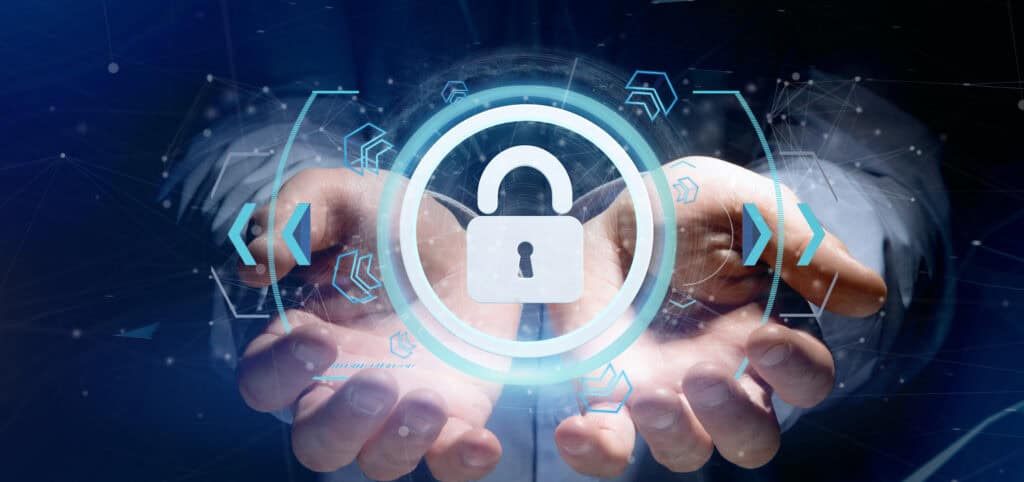In the rapidly evolving world of cybersecurity, businesses must navigate a myriad of solutions to ensure the safety and security of their digital assets. Among the most critical technologies in this domain are Managed Detection and Response (MDR), Endpoint Detection and Response (EDR), and Security Information and Event Management (SIEM). Each of these plays a unique role in protecting organizations against cyber threats, yet their distinctions can often be confusing.
In this blog, we’ll explore the key differences between MDR, EDR, and SIEM, outlining their roles, benefits, and use cases. By understanding these solutions, businesses can make informed decisions about their cybersecurity strategies, particularly with the expert guidance and services offered by CMIT Solutions of Hayward.
What is MDR?
Managed Detection and Response (MDR) is a comprehensive, managed cybersecurity solution designed to detect, analyze, and respond to advanced threats. It combines cutting-edge technology with human expertise to deliver a proactive defense against cyberattacks.
Key Features of MDR:
- 24/7 Monitoring: MDR solutions provide round-the-clock threat detection, ensuring that businesses remain protected even during off-hours.
- Threat Hunting: Leveraging advanced analytics and machine learning, MDR providers actively hunt for threats that may evade traditional security measures.
- Incident Response: MDR teams not only detect but also respond to threats in real-time, minimizing damage and recovery time.
- Integration with Existing Tools: MDR services can integrate seamlessly with existing IT infrastructures, complementing other cybersecurity tools.
For businesses looking for robust, outsourced cybersecurity solutions, MDR is an ideal choice. At CMIT Solutions of Hayward, our managed services are tailored to deliver proactive protection and response capabilities. Learn more about our managed services here.
What is EDR?
Endpoint Detection and Response (EDR) focuses on securing endpoints—devices like laptops, desktops, servers, and mobile devices—against cyber threats. It’s a technology-driven solution that identifies suspicious activities at the endpoint level and provides detailed forensic data for analysis.
Key Features of EDR:
- Endpoint Visibility: EDR offers deep visibility into endpoint activities, helping to identify potential security breaches.
- Automated Response: Using AI and automation, EDR tools can contain threats at the endpoint before they spread across the network.
- Forensic Insights: EDR solutions provide detailed logs and data that aid in threat analysis and compliance reporting.
- Integration with Security Tools: While EDR focuses on endpoints, it often integrates with broader security systems like SIEM for enhanced protection.
For organizations dealing with a large number of remote workers or distributed devices, EDR provides essential protection. CMIT Solutions of Hayward offers advanced EDR tools to safeguard endpoints effectively. Explore our cybersecurity solutions.
What is SIEM?
Security Information and Event Management (SIEM) is a technology platform that collects and analyzes security data from across an organization’s IT environment. Unlike MDR and EDR, which focus on detection and response, SIEM is more about monitoring and analysis.
Key Features of SIEM:
- Data Aggregation: SIEM collects logs and events from various sources, such as firewalls, servers, and applications.
- Correlations and Alerts: Using pre-defined rules, SIEM identifies unusual patterns or anomalies and generates alerts for further investigation.
- Compliance Support: Many organizations use SIEM to meet regulatory compliance requirements by maintaining detailed records of security events.
- Customization: SIEM tools can be tailored to meet the specific needs of different industries.
SIEM provides the backbone for many cybersecurity strategies, offering insights that inform other tools like MDR and EDR. At CMIT Solutions of Hayward, we provide network management and compliance solutions that complement SIEM for comprehensive security. Learn more about our compliance offerings.
Choosing the Right Solution for Your Business
Selecting between MDR, EDR, and SIEM depends on your business’s unique needs, resources, and IT environment. Here’s a breakdown of scenarios where each solution excels:
- MDR is ideal for:
- Small to medium-sized businesses lacking in-house security expertise.
- Organizations requiring 24/7 threat monitoring and response.
- Companies seeking a cost-effective way to outsource cybersecurity.
- EDR is ideal for:
- Businesses with a high number of remote or distributed endpoints.
- Organizations needing detailed forensic data for compliance or investigations.
- Companies aiming to contain endpoint-level threats quickly.
- SIEM is ideal for:
- Enterprises with complex IT environments that need centralized monitoring.
- Organizations subject to stringent compliance requirements.
- Businesses with in-house security teams that can analyze and act on SIEM alerts.
With the right guidance, businesses can often leverage a combination of these tools for comprehensive cybersecurity. At CMIT Solutions of Hayward, we provide tailored IT packages that address diverse security needs. Explore our IT services packages here.
The Role of CMIT Solutions of Hayward in Your Cybersecurity Journey
Navigating the complexities of MDR, EDR, and SIEM can be daunting, but you don’t have to do it alone. As a trusted managed services provider, CMIT Solutions of Hayward offers end-to-end IT support and cybersecurity services. Our team of experts works closely with businesses to assess their needs, implement the right solutions, and provide ongoing support.
Our services include:
- Managed IT services
- Advanced cybersecurity solutions
- Cloud services
- Network management
- Compliance and data backup
Whether you need guidance on selecting the right cybersecurity tools or support in implementing them, CMIT Solutions of Hayward is here to help.
Conclusion
In today’s threat landscape, understanding the differences between MDR, EDR, and SIEM is crucial for building an effective cybersecurity strategy. Each solution offers unique strengths, and when used together, they provide a multi-layered defense against evolving cyber threats.
At CMIT Solutions of Hayward, we understand the importance of tailored cybersecurity strategies. Our comprehensive services ensure that businesses of all sizes can access the tools and expertise they need to stay protected. Ready to enhance your cybersecurity posture? Contact us today.
By leveraging the right mix of technology and expertise, your business can stay one step ahead of cybercriminals. Explore our blog for more insights into the latest IT trends and solutions. Together, we can build a safer digital future.




